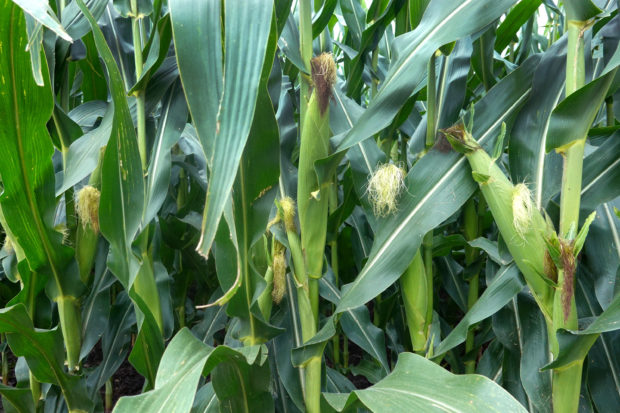
Corn planted to a farm near Dwight, Illinois. (Photo by SCOTT OLSON / GETTY IMAGES NORTH AMERICA / Getty Images via AFP)
The United States is optimistic about exporting more agricultural products to the Philippines this year, anticipating demand especially for food and beverage products despite an upswing in prices.
“Our products are safe and we think, without any unfair trade barriers, we can increase our exports,” US Department of Agriculture (USDA) Foreign Agricultural Service administrator Daniel Whitley told reporters.
The Philippines is the eighth-largest export market for US agricultural and food exports. Based on a report by the USDA, US farm exports to the country in 2021 hit a record $3.5 billion from $3.2 billion a year earlier.
Recently, the USDA projected that the Philippines would purchase about $3.8 billion worth of American agricultural products this year, an increment of 8 percent.
The foreign agency noted “strong opportunities” for farm products such as milk, cheese, meat, poultry, baked products, fruits, vegetables, wine and pet food.
Sales from the food and beverage industry alone were projected to gro
w by 6 percent, attributing it to stimulus from the recent national elections alongside the relaxation of mobility restrictions.
Whitley said the United States was “especially optimistic” about meeting the projections for 2022.
“Obviously, we talked about value [or] prices [which] have been somewhat high, but demand has not really fallen off so we do think that those projections would hold true,” said Whitley.
He said the upward consumer price pressures on food would likely prompt the Philippines to open up the market to foreign supply.
In June, Philippine annual inflation rate shot up to 6.1 percent, the highest in three years. Inflation rate on food and non-alcoholic beverages alone quickened to 6 percent from 4.9 percent in May.
Previous USDA analysis suggested that the demand for US food and beverages would remain strong despite global supply and logistical challenges.
The Philippine government has slowly reopened the economy, allowing businesses to operate and recover with the easing of quarantine restrictions while striving to prevent a resurgence in COVID-19 cases.
“So, the $3.8-billion projection sounds about right to me. I think we will hit that target, I really do,” Whitley said.